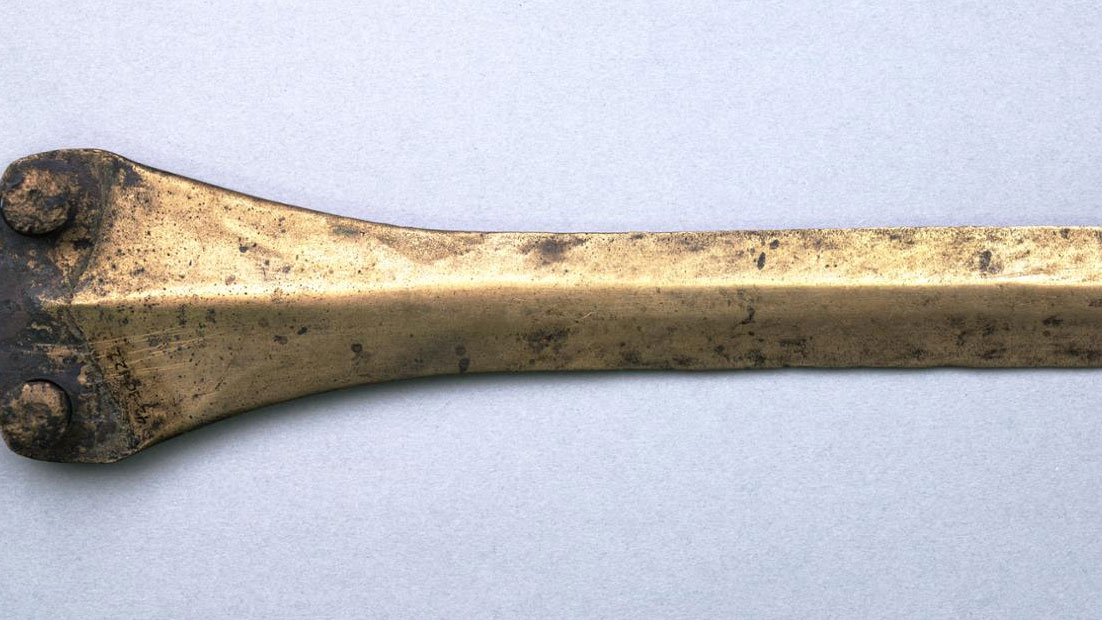European Archaeology Section
The European Collection holds an estimated 20,000 objects most of which are exclusively archaeological.

The European Collection holds an estimated 20,000 objects most of which are exclusively archaeological.

The Penn Museum began acquiring prehistoric European archaeological collections in 1892. These collections were housed in the General Ethnology/American and Prehistoric Archaeology Curatorial Section until 1913 when the European Curatorial Section was formally created as a separate entity.
The major prehistoric periods represented are Paleolithic (c. 3,900 objects); Neolithic (c. 7,950 objects) and Bronze Age (c. 1,049 objects). Additionally, some historic Iron Age (236 objects), Italic (15 objects), Roman (78 objects), and Medieval (76 objects) have also been identified. In addition, few modern lithics as well as approximately 50 modern tools and raw materials from the 19th century Brandon Flint Quarries are included in the sections holdings. The section can be subdivided into three distinct collections.
The European Archaeology collection is especially strong in flint tools of the neolithic period, most of which are exclusively archaeological.
The Swiss Lake Collection is comprised of 905 objects including rare pieces made of wood, fiber, and plant matter from the Bronze Age Period. It is particularly significant in that the original collections were not kept intact, but widely dispersed to a variety of institutions. The collections represent the material originally acquired by the Penn Museum as well as the collections of the Brooklyn Museum of Art, the Academy of Natural Science, the American Philosophical Society, and the Philadelphia Museum of Art. The latter is a long-term institutional loan to the Penn Museum.
A Central European Collection was excavated in Central Europe (Bohemia) by Vladimir J. Fewkes in the 1920s and 1930s. The collection contains around 10,000 objects. Most of the Bohemian collections were sent as a loan to the Peabody Museum, Harvard for study and publication and verbally deaccessioned to the Peabody Museum in 1965.
The remainder of the European section is predominately Western European prehistoric material. The geographic distribution is as follows: France (3,517 objects), United Kingdom (2,027 objects), Italy (395 objects), Scandinavia (243 objects), Belgium (234 objects) Germany (61 objects), Greece (41 objects), and Spain (35 objects).The Museum has not received any collections from its expedition in Europe; rather most of the collections were acquired as donations, purchases or exchanges. Noteworthy Collections include: Robert H. Lamborn, Henry C. Mercer, Mrs. William H. Miller, Henri Martin (La Quina, France), Maurice Feaux, Louis Didon, Victor Commont, Robert Elliot (England), and Lillian V. M. Rivers (England). Study collections were received as gifts, purchases, or exchanged from the Field Museum, British Museum, Peabody Museum Harvard, and the American School of Prehistoric Research in Europe.